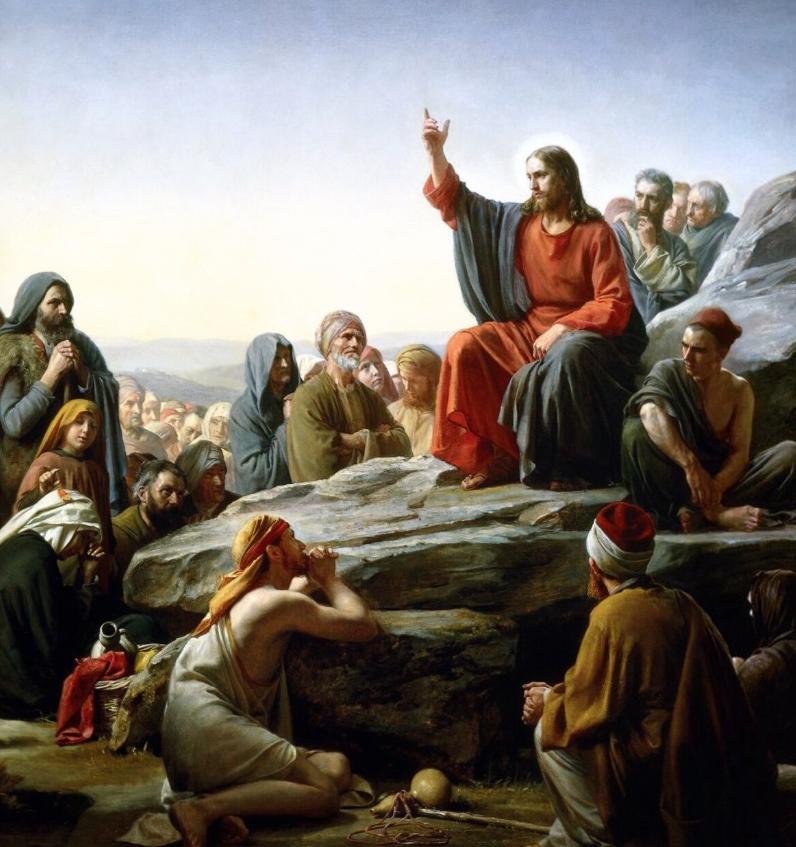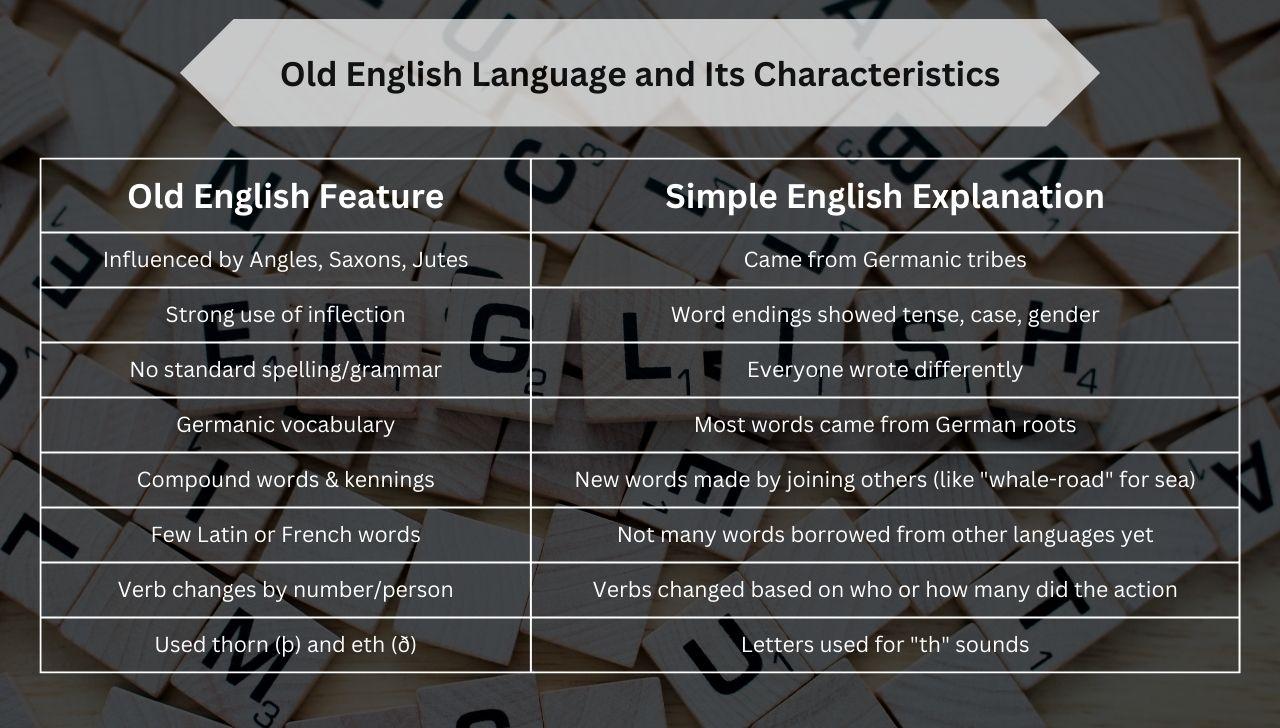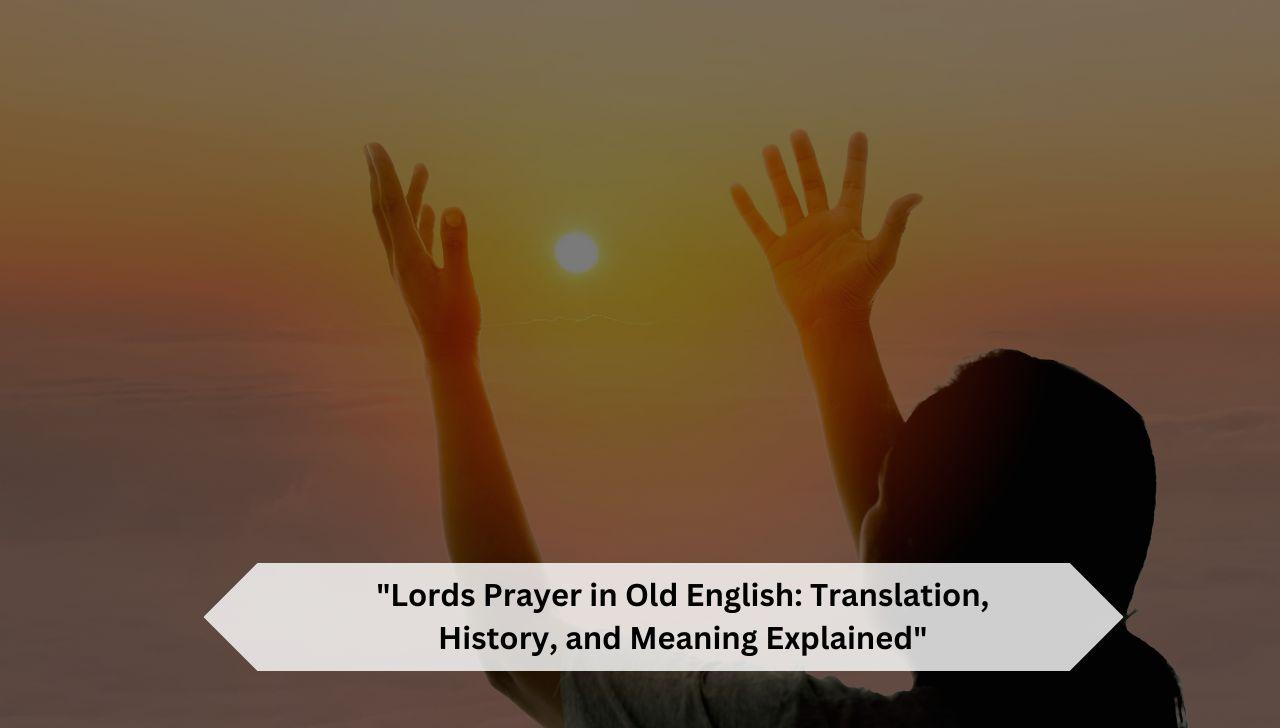Lords Prayer in Old English: Translation, History, and Meaning Explained
The Lord’s Prayer is a key part of Christianity. It’s like a guide on how to live and pray. People from many Christian groups say this prayer. It asks for God’s help and discusses important ideas like forgiveness and caring for our daily needs. It also asks for protection from bad things. When Christians say this prayer, they’re not just talking to God but also promising to live as Jesus taught.
It’s a simple but powerful way to connect with God and keep on track with what matters in life. Whether asking for help, saying sorry, or looking for guidance, this prayer covers everything. It brings people together and reminds them of the basics of their faith, every time they say it.

Origins of the Lord’s Prayer in Christianity
The Lord’s Prayer is essential in Christianity. It comes directly from Jesus, as shown in the Gospels of Matthew and Luke.
Jesus shared this prayer during the Sermon on the Mount and it gets to the heart of what Christians believe and how they connect with God. It’s a guide for both group and individual prayers. Early Christians took this prayer to heart, using it in worship and daily life. It’s like a blueprint for talking to God, simple but powerful.
The Transition to Old English
As Christianity spread through Anglo-Saxon England, they started using Old English for the Lord’s Prayer. This move was part of a more significant change as people shifted from pagan beliefs to Christianity.
Translating this key prayer made it easier for everyone to understand and feel closer to their new faith. It made the prayer a part of daily life, helping the shift to Christianity stick better.

Old English Language and Its Characteristics
Old English came from the languages of groups like the Angles, Saxons, and Jutes. People spoke it from the 5th to the 12th centuries in parts of what we now call England and southern Scotland.
| Old English Feature | Simple English Explanation |
|---|---|
| Influenced by Angles, Saxons, Jutes | Came from Germanic tribes |
| Strong use of inflection | Word endings showed tense, case, gender |
| No standard spelling/grammar | Everyone wrote differently |
| Germanic vocabulary | Most words came from German roots |
| Compound words & kennings | New words made by joining others (like “whale-road” for sea) |
| Few Latin or French words | Not many words borrowed from other languages yet |
| Verb changes by number/person | Verbs changed based on who or how many did the action |
| Used thorn (þ) and eth (ð) | Letters used for “th” sounds |
| Spelling matched pronunciation | Words sounded like how they were spelled |
| Three noun genders | Nouns could be masculine, feminine, or neuter |
| Alliteration in poetry | Poems repeated beginning sounds a lot |
| Verb often at sentence end | Sentences often ended with the verb |
| Four noun cases | Nouns changed form for subject, object, etc. |
| Dual pronouns | Special pronouns for talking about two people |
| Flexible word order | Words could move around in a sentence due to endings |
| Strong vs. weak verbs | Verbs grouped by how they changed tense |
| Many word endings | Words had different endings based on use |
| Used runes first | Writing started with rune letters |
| Oral storytelling | Stories passed down by speaking, not writing |
| Nature-based vocabulary | Words were tied to daily life and the natural world |
| No silent letters | Every letter was pronounced |
| Heavy use of prefixes/suffixes | Word parts changed meaning or grammar |
| Little punctuation | Writing had few periods or commas |
| Handwritten manuscripts | Texts were copied by hand in churches |
| Poetic style | Writing was full of poetry, especially for heroes or religion |
| No “a” or “the” at first | Early Old English had no articles |
| Norse influence | Viking words entered the language |
| Regional spelling differences | Words looked and sounded different by location |
| Many words now obsolete | A lot of old words aren’t used anymore |
| Became Middle English after 1066 | Language changed after Norman invasion |
This language had a complex way of using endings on words to show different meanings, and verbs could be strong or weak. It also had some sounds that you won’t hear in English today, and its words were shaped a lot by Norse due to Viking invasions and by Latin from the spread of Christianity.
Also Read – May the Odds Be Ever in Your Favor – Its Meaning, Origin and Usage
Translation of the Lord’s Prayer into Old English
The Lord’s Prayer has an Old English version that shows what the language was like back then. This translation is not just about the words themselves; it also gives us a peek into what life and faith were like in early medieval England.
- Keeping traditional phrases: This shows how some ways of saying things have long existed.
- Old-school pronouns: It’s interesting to see how the words we use for “you” and “I” have changed over the years.
- The way sentences are built: The structure makes the prayer feel more serious and vital.
- Old-time religious words: These terms help us get how people back then thought about their faith.
- Made for Anglo-Saxons: It’s tweaked to make more sense to those of that time and place.
Historical Context of the Old English Version
Understanding the Old English version of the Lord’s Prayer helps us see its importance in language and culture. This version comes from the Anglo-Saxon period, which lasted from the 5th to the 11th centuries.
Back then, England was just getting to know Christianity. Christian missionaries like Augustine of Canterbury were key in changing the beliefs of the Anglo-Saxon pagans. As Christianity spread, it started to shape the language and writings of the time. The Old English version of this prayer didn’t just meet spiritual needs; it also played a significant role in blending Christian elements into England’s culture and language.
Comparison with Modern English Translations
When we compare the Lord’s Prayer in Old English to its modern versions, we see a lot of changes. Language has evolved quite a bit. Old English used more complex sentence structures, while modern English is more uncomplicated and straightforward.
- We’ve moved from complex to simpler grammar.
- Using pronouns and verbs has changed to fit today’s speaking style.
- A lot of the Old English words are no longer used.
- The way we talk about divine elements has shifted.
- Today’s versions show respect and worship more subtly.
It’s exciting to see how language transforms over time, isn’t it? These changes show that language is constantly moving, adapting to new times and needs.
Legacy and Influence on Later English Translations
How the Lord’s Prayer has changed from Old English significantly impacts later English versions. Early translations were straightforward and powerful, setting the tone for future versions’ rhythmic and poetic styles.
As the language moved from Middle to Early Modern English, key aspects like structure and vocabulary stayed the same. This helped keep the prayer’s theological meaning clear and accessible. This careful language handling influenced principal translations like the King James Bible, which still carries the seriousness and respect of its earlier forms.
Conclusion
The journey of the Lord’s Prayer—from Jesus’ teachings to its Old English translation—shows how faith, language, and culture grow together. This prayer has stayed powerful through centuries of change, guiding Christians in how they speak to God and live their lives. Its translation into Old English helped early believers connect with a new faith in their own tongue, shaping both spiritual practice and the development of English itself.







